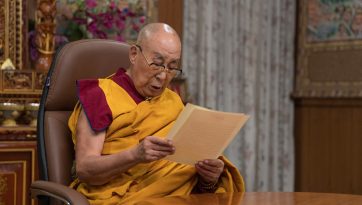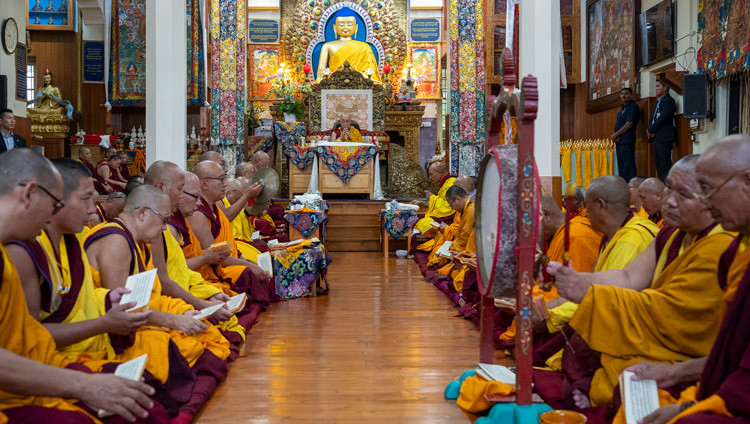VI. THE NATURE AND STRUCTURE OF THE AUTONOMY
The extent to which the right to self-government and self-administration can be exercised on the preceding subject matters largely determines the genuine character of Tibetan autonomy. The task at hand is therefore to look into the manner in which autonomy can be regulated and exercised for it to effectively respond to the unique situation and basic needs of the Tibetan nationality.
The exercise of genuine autonomy would include the right of Tibetans to create their own regional government and government institutions and processes that are best suited to their needs and characteristics. It would require that the People’s Congress of the autonomous region have the power to legislate on all matters within the competencies of the region (that is the subject matters referred to above) and that other organs of the autonomous government have the power to execute and administer decisions autonomously. Autonomy also entails representation and meaningful participation in national decision-making in the Central Government. Processes for effective consultation and close cooperation or joint decision-making between the Central Government and the regional government on areas of common interest also need to be in place for the autonomy to be effective.
A crucial element of genuine autonomy is the guarantee the Constitution or other laws provide that powers and responsibilities allocated to the autonomous region cannot be unilaterally abrogated or changed. This means that neither the Central Government nor the autonomous region’s government should be able, without the consent of the other, to change the basic features of the autonomy.
The parameters and specifics of such genuine autonomy for Tibet that respond to the unique needs and conditions of the Tibetan people and region should be set out in some detail in regulations on the exercise of autonomy, as provided for in Article 116 of the Constitution (enacted in LRNA Article 19) or, if it is found to be more appropriate, in a separate set of laws or regulations adopted for that purpose. The Constitution, including Article 31, provides the flexibility to adopt special laws to respond to unique situations such as the Tibetan one, while respecting the established social, economic and political system of the country.
The Constitution in Section VI provides for organs of self-government of national autonomous regions and acknowledges their power to legislate. Thus Article 116 (enacted in Article 19 of the LRNA) refers to their power to enact “separate regulations in light of the political, economic and cultural characteristics of the nationality or nationalities in the areas concerned.” Similarly, the Constitution recognises the power of autonomous administration in a number of areas (Article 117-120) as well as the power of autonomous governments to apply flexibility in implementing the laws and policies of the Central Government and higher state organs to suit the conditions of the autonomous area concerned (Article 115).
The above-mentioned legal provisions do contain significant limitations to the decision-making authority of the autonomous organs of government. But the Constitution nevertheless recognises the principle that organs of self-government make laws and policy decisions that address local needs and that these may be different from those adopted elsewhere, including by the Central Government.
Although the needs of the Tibetans are broadly consistent with the principles on autonomy contained in the Constitution, as we have shown, their realisation is impeded because of the existence of a number of problems, which makes the implementation of those principles today difficult or ineffective.
Implementation of genuine autonomy, for example, requires clear divisions of powers and responsibilities between the Central Government and the government of the autonomous region with respect to subject matter competency. Currently there is no such clarity and the scope of legislative powers of autonomous regions is both uncertain and severely restricted. Thus, whereas the Constitution intends to recognise the special need for autonomous regions to legislate on many matters that affect them, the requirements of Article 116 for prior approval at the highest level of the Central Government – by the Standing Committee of National People’s Congress (NPC) – inhibit the implementation of this principle of autonomy. In reality, it is only autonomous regional congresses that expressly require such approval, while the congresses of ordinary (not autonomous) provinces of the PRC do not need prior permission and merely report the passage of regulations to the Standing Committee of the NPC “for the record” (Article 100).
The exercise of autonomy is further subject to a considerable number of laws and regulations, according to Article 115 of the Constitution. Certain laws effectively restrict the autonomy of the autonomous region, while others are not always consistent with one another. The result is that the exact scope of the autonomy is unclear and is not fixed, since it is unilaterally changed with the enactment of laws and regulations are higher levels of the state, and even by changes in policy. There is also no adequate process for consultation or for settling differences that arise between the organs of the Central Government and of the regional government with respect to the scope and exercise of autonomy. In practice, the resulting uncertainty limits the initiative of regional authorities and impedes the exercise of genuine autonomy by Tibetans today.
We do not at this stage wish to enter into details regarding these and other impediments to the exercise of genuine autonomy today by Tibetans, but mention them by way of example so that these may be addressed in the appropriate manner in our dialogue in the future. We will continue to study the Constitution and other relevant legal provisions and, when appropriate, will be pleased to provide further analysis of these issues, as we understand them.




